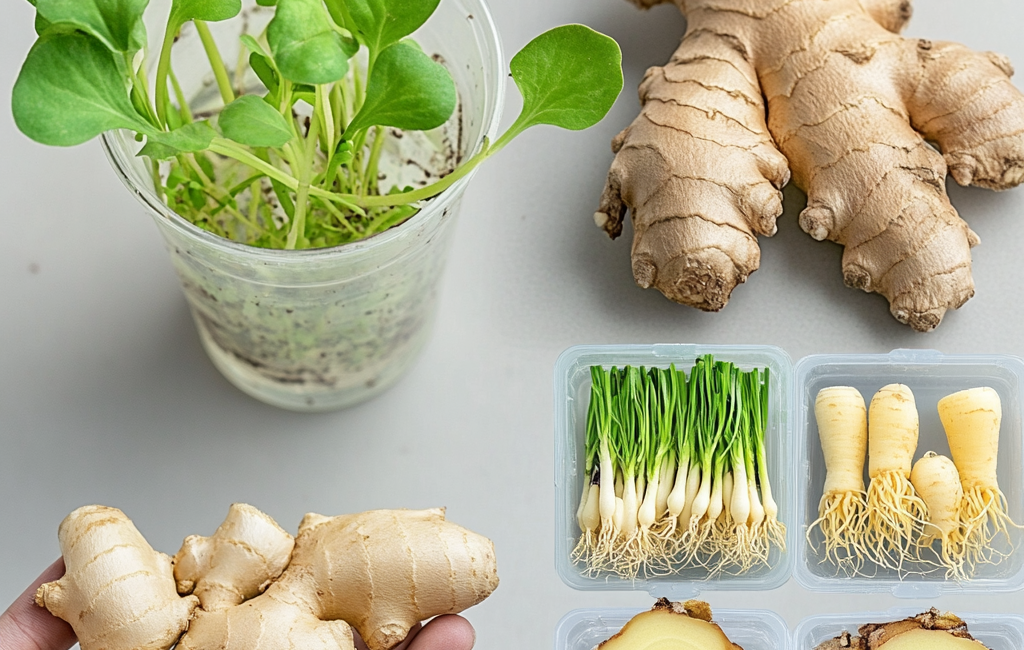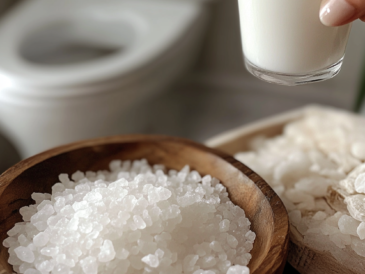Growing ginger hydroponically, or in water, is an exciting, low-maintenance way to have a steady supply of this aromatic root. Whether you’re an experienced gardener or just starting, growing ginger indoors using water is surprisingly simple and yields rewarding results. This comprehensive guide will walk you through the entire process, from selecting the right rhizome to maintaining optimal growing conditions.
In addition to its culinary uses, ginger is known for its medicinal properties, from soothing nausea to reducing inflammation, making it an essential in many homes. Hydroponic gardening is also an ideal solution for small spaces, requiring minimal soil and upkeep, while still providing fresh, organic produce year-round.
Part 1: Getting Started with Hydroponic Ginger Growing
Step 1: Selecting the Perfect Ginger Rhizome
The first and arguably most important step in growing ginger in water is choosing the right rhizome. The rhizome is the underground stem from which the ginger plant grows, and selecting a healthy one sets the stage for successful cultivation.
- Look for Active Buds: When selecting a ginger root, make sure it has well-developed growth buds or “eyes” (similar to those found on potatoes). These buds are essential for new shoots to sprout. The more buds, the better your chances of producing multiple ginger plants.
- Check for Freshness: Choose a rhizome that is plump and firm, avoiding any that are shriveled or showing signs of rot. Organic ginger is preferable, as it hasn’t been treated with growth inhibitors often used on non-organic produce.
- Where to Buy: Most organic grocery stores, farmer’s markets, or nurseries offer ginger rhizomes suitable for planting. Ensure that the ginger is free of chemicals that could affect its ability to sprout in a hydroponic system.
Step 2: Preparing the Ginger Rhizome for Planting
Once you’ve selected a healthy ginger root, the next step is preparation. Properly preparing the rhizome ensures optimal growth and reduces the risk of rot.
- Cut the Rhizome: If your ginger root is particularly large, you can cut it into smaller sections, as long as each piece has at least one eye or growth bud. Use a clean knife to prevent contamination.
- Air-Dry the Pieces: Let the ginger pieces sit in a dry, airy place for a few hours, or even overnight, to allow the cut surfaces to callous over. This drying period forms a protective layer that helps prevent the rhizome from rotting once placed in water.
Step 3: Setting Up Your Hydroponic Ginger System
Setting up your hydroponic system is simple and doesn’t require any expensive equipment. Here’s what you’ll need:
- Choosing a Container: A wide, shallow container is ideal for growing ginger in water, as the rhizomes will spread out horizontally. Clear containers are a great option because they allow you to easily monitor root growth and check the water level. Just ensure that your container has a wide enough base to give the ginger space to expand.
- Using Clean Water: The quality of the water is crucial for your hydroponic ginger to thrive. Distilled water or tap water that has been left to sit for 24 hours to allow any chlorine to evaporate works best. This reduces the risk of root damage and promotes healthy growth.
- Supporting the Rhizome: The rhizome should not sit fully submerged in water. Instead, you’ll want to use pebbles, marbles, or similar non-toxic materials to suspend the ginger just above the water. This setup allows the bottom of the rhizome to touch the water and start growing roots while keeping the top dry, which helps prevent mold or rot.
Step 4: Finding the Optimal Growing Conditions
Once your ginger is properly set up in water, it’s time to consider where to place it for optimal growth. Ginger thrives in warm, humid environments, so you’ll need to find a spot in your home that replicates these conditions.
- Indirect Sunlight: Ginger grows best with bright, indirect sunlight. A windowsill that receives diffused light or a warm room with indirect natural light will work well. Avoid direct sunlight, as it can promote algae growth in the water and may burn the tender shoots.
- Maintain a Stable Temperature: Ginger prefers warm environments, with a temperature range between 70°F and 85°F (21°C to 29°C). Keeping the temperature stable will encourage steady growth, so avoid drafty spots or areas prone to cold fluctuations.
- Monitor Humidity Levels: If you live in a particularly dry climate, you may want to increase the humidity around your ginger plant by misting it lightly with water or using a small humidifier. This mimics the plant’s natural tropical environment, supporting healthy sprout development.
At this stage, you’ve done most of the hard work! Now, it’s all about patience and care. You’ll notice roots starting to form after a few weeks, followed by green shoots that signify successful growth. But how do you maintain this plant long-term?
Part 2: Long-Term Care and Harvesting Ginger
Just click page “2” below




